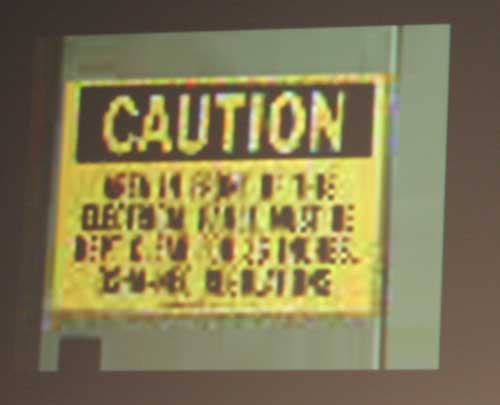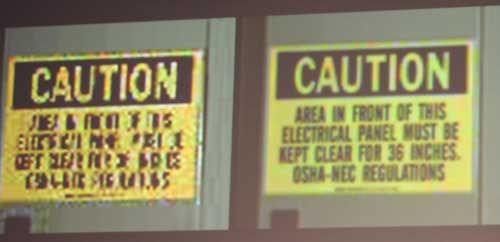IDF Spring 2005 - Day 3: Justin Rattner's Keynote, Predicting the Future
by Anand Lal Shimpi on March 3, 2005 3:17 PM EST- Posted in
- Trade Shows
The Super Resolution demo
With the proliferation of broadband comes the increase in expectations for the quality of media you find on the internet. Unfortunately, not everyone has a good digital camera and not everyone has a good digital video camera. Especially with more and more cell phones coming with integrated cameras, movies made on them are usually pretty poor quality when viewed at 2x their size.
At the same time, we've all seen TV shows like 24 or CSI where someone sitting at a keyboard can simply "sharpen that up" and make even the blurriest, lowest resolution image clear enough to pick out someone's face. We all usually scoff at the idea and complain about how unrealistic things like that are, but in reality, there is some truth to what's going on.
There are a set of algorithms that look at images and perform motion analysis on a pixel basis as well as statistical analysis on a per frame basis to help enhance the resolution of an image or a movie. In today's keynote, this technique is referred to as Super Resolution (no comment).
The demo was of a loop of about 3 seconds of low resolution video of a caution sign, you can see the original video cap below:

Take on a camera phone, the video was then cleaned up using these Super Resolution techniques to result in the following:

The results were nothing short of impressive - but why the demo? It took the current generation microprocessors about 1 minute to clean up that 3 second video, to do a full length conversion on more difficult material would require around 1000x the compute power current platforms offer. Rattner used Super Resolution as an example of what multi-core CPUs by 2015 will be able to enable.










15 Comments
View All Comments
HardwareD00d - Thursday, March 3, 2005 - link
Wishful thinking for Intel. Who the heck knows what will happen in 10 years. The earth will probably be taken over by Soviet Russia and Yakov Smirnov will be president.When I hear about this stuff I keep thinking back to the Prescott and how it was going to scale to 5 GHz + . Yeah right.
Dualboy24 - Thursday, March 3, 2005 - link
#2 The Super Resolution technique would work only with a video signal as stated a 3 second low resolution one. It would not work with a single still low resolution image. The software just compares the pixels and motion between frames to generate a single clean frame. 3 seconds can mean 30 to 90 frames for analysis in total depending on the rate of capture. Still very impressive how clear it made it.Impressive stuff.. I cant wait till 2015... I want 100 cores now! I bet developer tools and compilers will start to take advantage of huge multitrheading.
ZobarStyl - Thursday, March 3, 2005 - link
Anyone think the idea of sticking two cores directly on top of one another for Intel's current processor line is a little bit ambitious? We're already curious about how 2 Prescotts side by side will fare, but one on top of another, how can that dissipate such a tremendous amount of heat?quanta - Thursday, March 3, 2005 - link
Maybe it was just Anand's screenshot, but the 'Super Resolution' technique looks like someone making up the whole thing when the source text is not supposed to be readable. Perfect for tampering with evidence. :)coldpower27 - Thursday, March 3, 2005 - link
Interesting stuff.